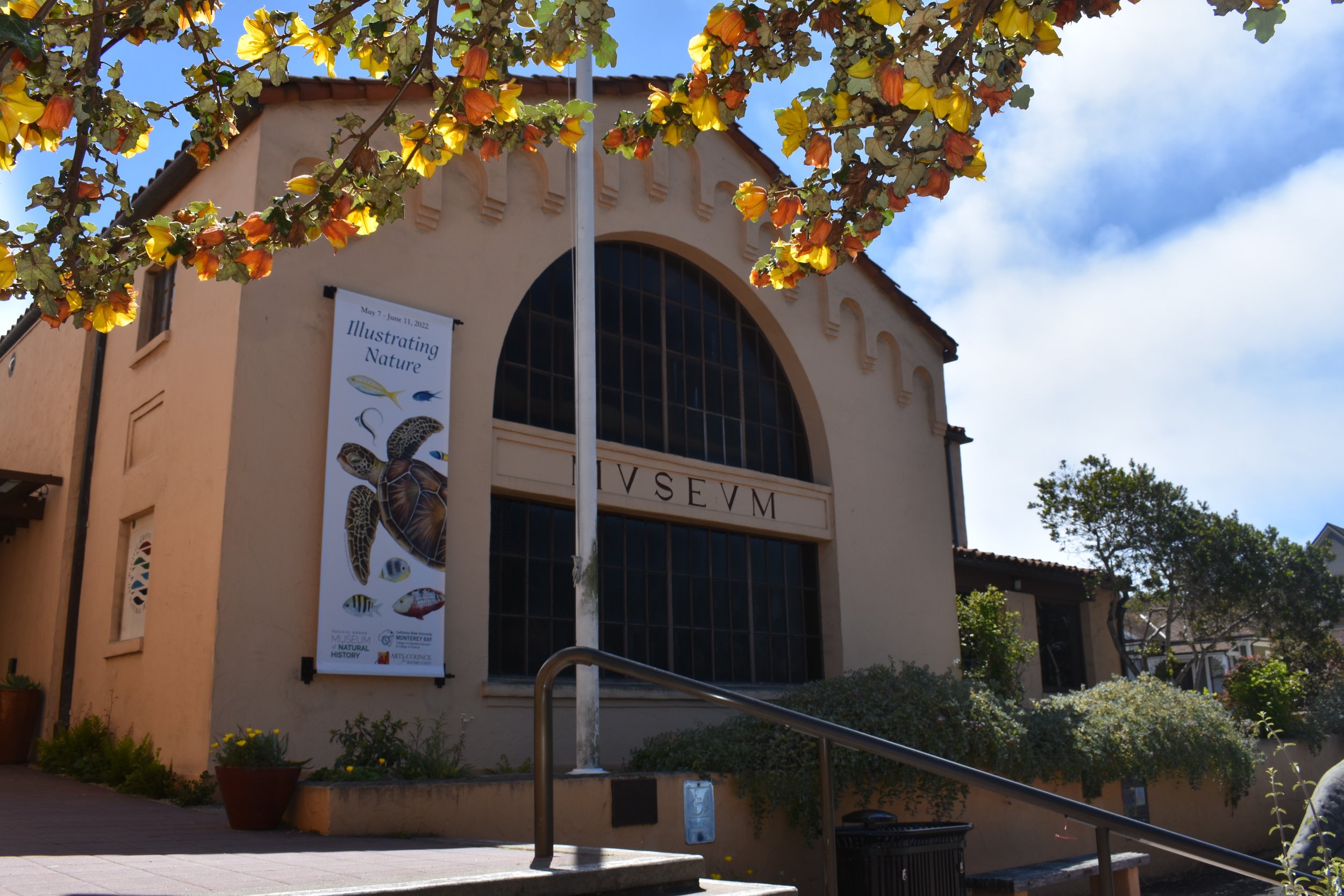Mission & Vision
Our Mission
To inspire discovery, wonder, and stewardship of our natural world.
Our Vision
We envision a community of curious minds, engaged in discovering the natural heritage and cultural legacy that exist today on the Central California Coast. The Museum is a catalyst for conservation and a valued learning resource in this region, facilitating active inquiry for all ages.
OUR VISION Statement
The Pacific Grove Museum of Natural History inspires a diverse community to explore and conserve the natural and cultural wonders of the Central California Coast.
Who We Are
In 1883, our Museum opened its doors among the first wave of natural history museums in America. Naturalists of this era began a national tradition of hands-on science education and natural preservation. Over the past 140 years, the museum has grown from the seeds of these ideas into the award-winning institution it is today.
What is Natural History?
Our Museum is part of the rebirth of Natural History. Get inspired by the leading naturalists in America. Thank you Natural Histories Project!
<5% of American Museums
Fewer than 5% of American museums have earned accreditation by the American Alliance of Museums (AAM). The Pacific Grove Museum of Natural History is proud to have earned re-accreditation for over 40 continuous years.
Museum History
The Chautauqua (shuh-TAH-kwuh) Literary and Scientific Circle established its Pacific Coast branch in Pacific Grove in 1879. A two-week Chautauqua assembly was held here every summer, featuring lessons, exhibits, lectures, picnics, and concerts. Over the years several members felt the need to have a storeroom and exhibition site to house collections of nature’s wonders and to make them available for study. In 1883, a petition calling for a Museum building was signed by Professor H. B. Norton, Dr. J. H. Wyeth, Dr. C. L. Anderson, Miss Lucy M. Washburn, Miss Mary E. B. Norton, and Professor Josiah Keep. The petition was sent to F. S. Douty, secretary of the Pacific Improvement Company, a small wooden octagonal building on their land the Chautauqua Museum's first home.
The original Chautauqua Museum in Pacific Grove was initiated at the second meetings of the Chautauqua Assembly in 1881, and the actual Museum was founded in 1883. The Museum was created to house collections of nature’s wonders and to make them available for study. In 1900 the Chautauqua Museum disbanded to form a more permanent organization as the Pacific Grove Museum Association. The Pacific Improvement Company donated the Museum’s current lot to the Association, and the Museum subsequently moved into a large building on its current site.
The Association maintained the Museum until 1916 when it was transferred to the City of Pacific Grove through a Charter election. The Museum remains city owned and is operated by a non-profit 501.c.3, The Museum Foundation of Pacific Grove, which was lead by Bob Snyder and a transition team that set the stage for a very successful public/private partnership. The Museum has been accredited by the American Association of Museums since 1972, the first such institution in Monterey County to do so.
The Museum Foundation
The Museum Foundation of Pacific Grove was created in 2009 and is supported by donors and the community to advance the Museum’s mission to inspire discovery, wonder, and stewardship of our natural world. Through its history, the Museum has benefited from the leadership of a series of committed men and women, including a dedicated board of directors.
The Museum’s fourth Executive Director is Dr. Rachel M. Miller, who had a successful tenure as the Executive Director of the Arts & Science Center (ASC) of Southeast Arkansas, where she led a period of historic growth and renewal of its buildings, programs, and mission. Miller calls herself a connector instead of a director. Her work trajectory has always included community engagement, whether it’s been through creating programs for cultural sites or teaching literature and writing in a college classroom or community workshop.
From 2021-2023, the Museum was led by Carla Bitter. Carla had a 20 year career in museums and public science education and led the installation of our two newest exhibits: Nature Exchange and Wonder.
From 2009 to 2014, Lori Mannel served as the Foundation’s first executive director. She built staff, volunteer, and financial capacity that allowed the Museum to stay open. She also created a master plan for the future of the Museum, helped to craft the operating agreement between the City and the Foundation, and led the reaccreditation of the Museum from the American Alliance of Museums.
From 2015 to 2020, Jeanette Kihs led the Museum, transforming it from a static destination to a place of great service to the community. Jeanette led the Museum through a difficult season in which it came under unwarranted public scrutiny, even when she herself was unfairly targeted. She raised significant funding for new exhibits and facilities improvements, participated in development of an ambitious strategic plan, delivered every aspiration in the plan, and grew the Museum’s reach to over 50,000 people, bringing the natural history of the Central Coast to schools across the county.




